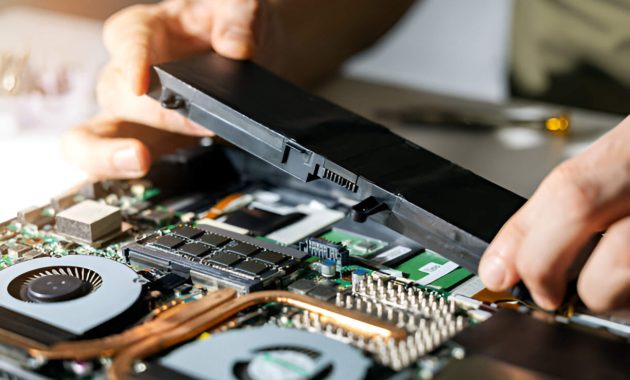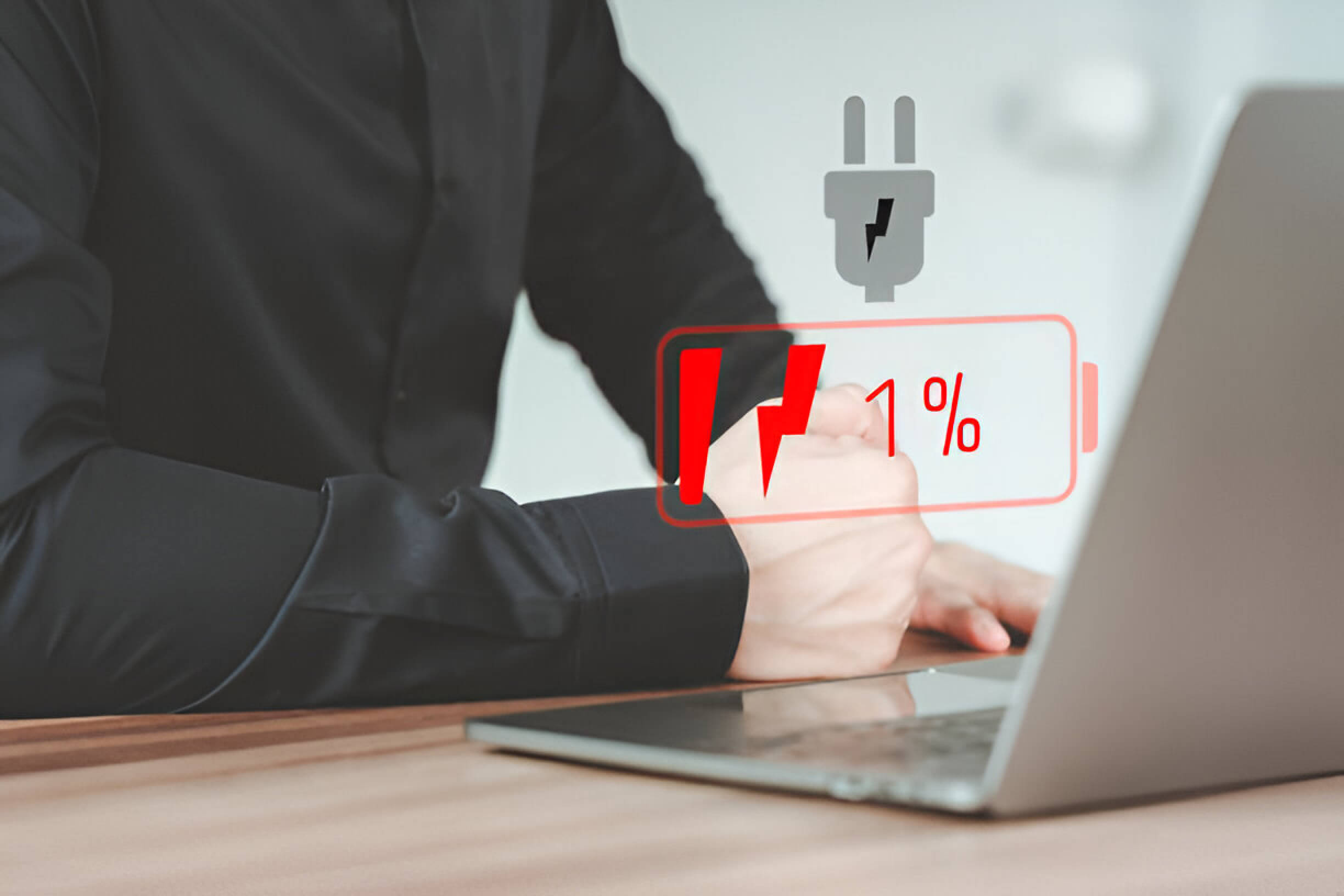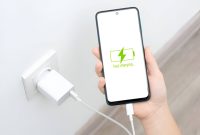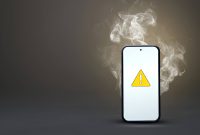Laptop batteries are the lifeblood of mobile computing, yet they often become a source of frustration for users. Understanding why your laptop battery might be draining quickly is crucial for maintaining productivity on the go. This article delves into seven common causes of rapid battery depletion, from high-performance settings to aging batteries, and offers practical solutions to extend battery life. By exploring these factors and implementing the suggested tips, you can optimize your laptop’s battery performance and enjoy longer, more efficient mobile computing sessions.
Understanding Laptop Battery Basics
Laptop batteries are a crucial component of portable computing, and understanding their basics can help you maximize their performance and longevity. Most modern laptops use lithium-ion batteries, which are known for their high energy density and relatively low self-discharge rate. Battery capacity is typically measured in watt-hours (Wh) or milliamp-hours (mAh), with higher numbers indicating longer potential run times.
One important concept to grasp is the charge cycle. A full charge cycle occurs when you use 100% of your battery’s capacity, whether in one sitting or over multiple partial charges. Lithium-ion batteries generally last for 300-500 charge cycles before their capacity begins to noticeably degrade. To extend your laptop’s battery life, it’s advisable to avoid frequent full discharges and instead keep the charge level between 20% and 80% when possible.
Factors affecting battery life include screen brightness, running applications, wireless connectivity, and ambient temperature. By managing these variables and understanding your battery’s characteristics, you can optimize your laptop’s performance and ensure it remains a reliable mobile computing companion for years to come.
1. High-Performance Settings Draining Your Battery
High-performance settings on your device can significantly impact battery life. When your device is set to performance mode, it prioritizes speed and responsiveness over energy efficiency. This means the processor runs at higher clock speeds, consuming more power in the process. Additionally, features like high screen brightness, which is often associated with performance settings, can be a major battery drain. While these settings enhance your device’s capabilities, they come at the cost of reduced battery longevity.
To conserve battery, consider adjusting your power settings. Switching to battery saver mode when you’re not engaged in resource-intensive tasks can extend your device’s operating time. This mode typically limits background processes and reduces screen brightness. Speaking of brightness, manually lowering it to a comfortable level can make a noticeable difference in battery consumption. Remember, finding the right balance between performance and battery life is key to optimizing your device’s usage.
2. Too Many Background Applications Running
One of the primary culprits behind a sluggish computer is the presence of too many background applications running simultaneously. These hidden processes can significantly drain your system’s resources, leading to decreased performance and slower response times.
To identify resource-intensive apps, open the Task Manager by pressing Ctrl+Shift+Esc. Sort the processes by CPU or Memory usage to pinpoint which applications are consuming the most resources. You may find that some programs you rarely use are running in the background, unnecessarily taxing your system.
Many applications are configured to launch automatically at startup, which can bog down your computer from the moment you turn it on. To manage startup programs, navigate to the “Startup” tab in Task Manager and disable any unnecessary items.
It’s also worth investigating background processes that may not be immediately visible. Some applications continue running in the background even after you’ve closed them. Regularly review your installed programs and uninstall any that you no longer need or use infrequently.
By streamlining your background applications and processes, you can free up valuable system resources, resulting in a noticeably more responsive and efficient computing experience.
3. Outdated or Malfunctioning Battery Drivers
Keeping your battery drivers up-to-date is crucial for optimal laptop performance. Outdated or malfunctioning drivers can lead to inaccurate battery readings and reduced power efficiency. To address this issue, consider the following steps:
First, ensure your Windows operating system is current by running Windows Update. This process often includes driver updates for various components, including the battery. Additionally, check your laptop manufacturer’s website for any specific battery driver updates that may not be included in Windows Update.
Performing a BIOS update can also help resolve battery-related issues, as it may contain improvements for power management. However, exercise caution when updating BIOS, as incorrect procedures can render your device inoperable.
Regularly conduct a battery health check using built-in Windows tools or manufacturer-specific software. This can help identify if the battery itself is the root cause of the problem rather than the drivers.
If driver updates and health checks don’t resolve the issue, consider seeking assistance from a professional technician who can diagnose and address more complex battery driver problems.
4. Age and Wear of the Battery
The lifespan of a battery is a crucial factor in determining its performance and efficiency. As batteries age, they naturally experience degradation, which affects their ability to hold a charge and deliver consistent power. This process is influenced by several factors, including the number of charge cycles the battery has undergone.
Each time a battery goes through a complete charge and discharge cycle, it slightly diminishes its overall capacity. Most modern lithium-ion batteries are designed to maintain about 80% of their original capacity after 500-1000 charge cycles. However, this can vary depending on the quality of the battery and how it’s been used.
Battery degradation manifests in various ways, such as reduced runtime, slower charging, and in some cases, swelling or other physical changes. It’s important to note that even batteries that are not frequently used will degrade over time due to chemical processes within the cells.
When a battery’s performance significantly declines, replacement becomes necessary. Many device manufacturers offer replacement batteries or battery replacement services. For some devices, third-party replacement batteries are available, though it’s crucial to ensure compatibility and quality when choosing this option.
Understanding the age and wear of your battery can help you anticipate when a replacement might be needed, allowing you to plan accordingly and maintain optimal device performance.
5. Extreme Temperatures Affecting Battery Performance
Extreme temperatures can significantly impact your laptop battery’s performance and longevity. Most lithium-ion batteries operate optimally within a temperature range of 20°C to 30°C (68°F to 86°F). Deviating from this range can lead to reduced efficiency and potential damage.
Overheating is a common issue that can severely affect battery life. When a laptop’s temperature rises above 35°C (95°F), the battery’s chemical reactions accelerate, leading to faster degradation. This can result in decreased capacity and shorter overall lifespan. To prevent overheating, ensure proper ventilation and use laptop cooling pads when necessary.
Cold weather can be equally detrimental to battery performance. When temperatures drop below 10°C (50°F), the chemical reactions within the battery slow down, reducing its ability to hold a charge and deliver power efficiently. In extreme cold, batteries may even stop functioning altogether.
To maintain optimal battery performance:
- Avoid exposing your laptop to direct sunlight or leaving it in hot cars.
- Use your laptop in temperature-controlled environments when possible.
- Allow your device to warm up gradually if it has been in cold conditions.
- Invest in a quality laptop cooling pad for extended use in warm environments.
By being mindful of temperature extremes and taking appropriate precautions, you can help preserve your laptop battery’s performance and extend its overall lifespan.
6. Faulty Charging Cable or Port
A common culprit behind charging issues is a faulty charging cable or port. Over time, these essential components can wear out or become damaged, leading to inconsistent or failed charging attempts. To identify and resolve these problems:
- Inspect your charging cable: Look for signs of fraying, kinks, or exposed wires. If you notice any damage, replace the cable immediately.
- Check the USB-C port: Examine the port on your device for debris, lint, or bent pins. Gently clean the port using compressed air or a soft brush.
- Try alternative charging accessories: Use a different cable or power adapter to determine if the issue lies with your current accessories.
- Test multiple power outlets: Ensure the problem isn’t related to a faulty wall socket by trying different outlets.
- Verify USB-C compatibility: If using a third-party charger, confirm it’s compatible with your device’s USB-C specifications.
- Consider wireless charging: If your device supports it, wireless charging can bypass potential port issues.
If connection troubleshooting doesn’t resolve the problem, consult with a professional technician to diagnose and repair any hardware-related charging issues.
7. Resource-Heavy Software and Malware
Resource-heavy software and malware can significantly impact your computer’s performance, often leading to high CPU usage and sluggish operation. Certain applications, particularly those involving GPU-intensive tasks like video editing or 3D rendering, can push your system to its limits. While these programs are designed to utilize substantial resources, unexpected spikes in CPU or GPU usage may indicate inefficient coding or compatibility issues.
Malware, on the other hand, can silently consume your computer’s resources without your knowledge. Cryptojacking malware, for instance, hijacks your CPU to mine cryptocurrency, causing noticeable slowdowns. To combat these threats, regular malware scans are essential. However, it’s important to note that antivirus software itself can be resource-intensive, especially during full system scans.
To maintain optimal performance, consider scheduling resource-heavy tasks and malware scans during periods of low computer usage. Additionally, keep your software and antivirus programs updated to ensure they’re operating efficiently and effectively protecting your system from the latest threats.
Tips to Extend Your Laptop’s Battery Life
Extending your laptop’s battery life is crucial for productivity on the go. Start by adjusting your power settings to favor energy efficiency over performance when unplugged. Dimming your screen brightness and disabling unnecessary features like Bluetooth and Wi-Fi when not in use can significantly reduce power consumption.
Regular battery calibration is essential for maintaining accurate battery life readings and optimal performance. This process involves fully charging your laptop, then allowing it to completely discharge before recharging again.
Develop energy-efficient habits such as closing unused applications and browser tabs, and avoiding resource-intensive tasks when on battery power. Consider using lightweight alternatives for common software, as these often consume less energy.
Software optimization plays a vital role in preserving battery life. Keep your operating system and drivers up to date, as newer versions often include power-saving improvements. Additionally, use built-in tools or third-party software to identify and address battery-draining applications.
By implementing these power-saving techniques and adopting energy-conscious habits, you can substantially increase your laptop’s battery life and stay productive for longer periods without needing to recharge.
When to Consider Replacing Your Laptop Battery?

Knowing when to replace your laptop battery is crucial for maintaining optimal performance and preventing unexpected shutdowns. Several battery health indicators can help you determine if it’s time for a replacement. Watch for significantly reduced battery life, unexpected shutdowns, or your laptop only functioning when plugged in. Many operating systems also offer built-in battery health checks that can provide more detailed information about your battery’s condition.
When considering replacement options, you have two main choices: professional replacement or DIY battery replacement. A professional assessment can accurately diagnose your battery’s health and ensure a proper replacement if needed. This option is particularly advisable for laptops with sealed batteries or complex designs.
For those comfortable with technology, DIY battery replacement can be a cost-effective solution. However, it’s essential to research your specific laptop model, acquire the correct replacement battery, and follow proper safety procedures. Remember that attempting a DIY replacement may void your warranty, so weigh this factor in your decision.
Ultimately, regularly monitoring your battery’s health and addressing issues promptly can extend your laptop’s lifespan and maintain its reliability for your daily computing needs.










